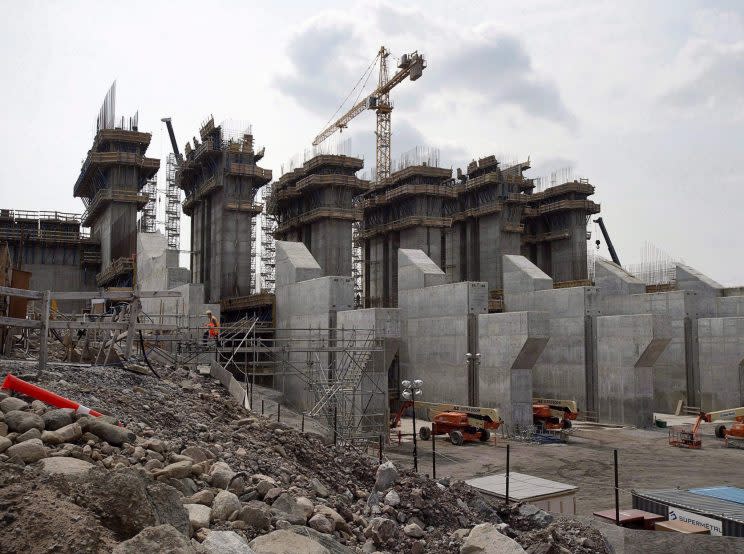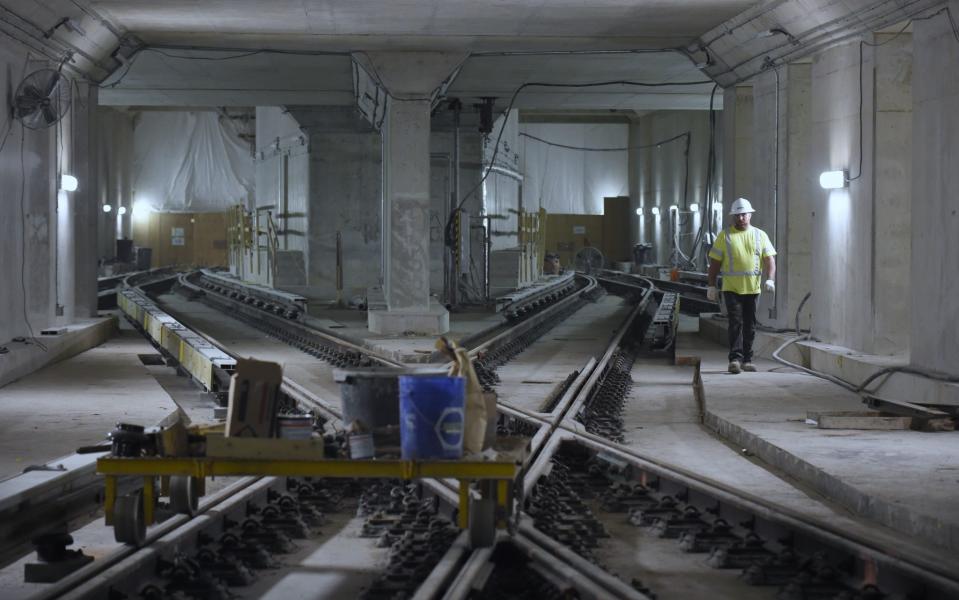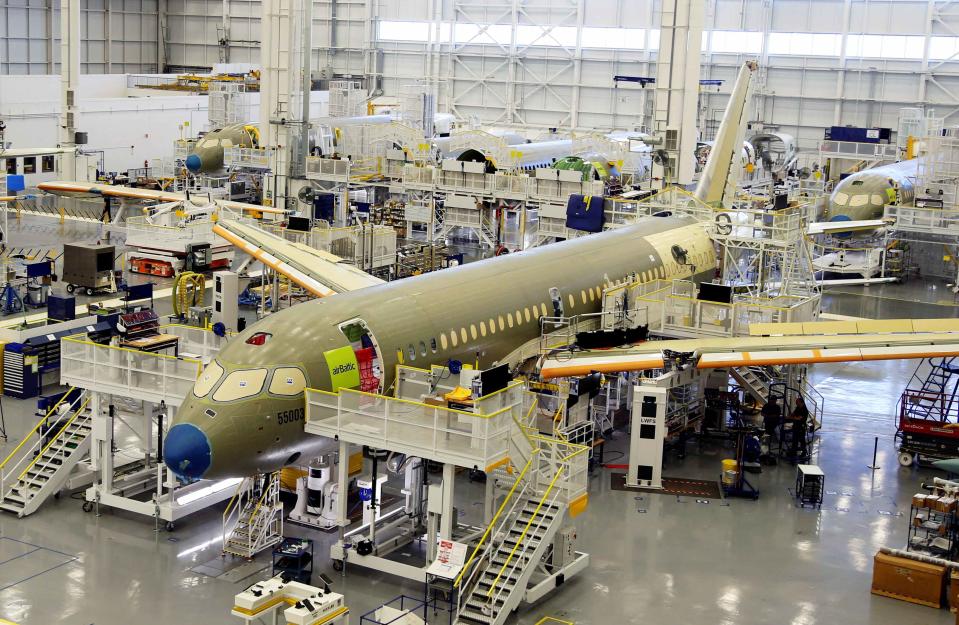Why do big public infrastructure projects so frequently go over budget?

The federal government has committed to doling out $186.7 billion on infrastructure projects over the next 12 years. This staggering figure is expected to fund many much-needed developments across the country.
But big public expenditures often elicit big worries about whether they can be built on budget and on time.
It isn’t hard to come up with examples of public projects going over budget, whether it’s Toronto’s Spadina subway extension incurring $400 million in overruns or the cost of the Muskrat Falls dam in Newfoundland and Labrador ballooning $4 billion from its original price.
But, according to Matti Siemiatycki, an expert on infrastructure financing and delivery at the University of Toronto, these instances aren’t simply outliers that grabbed national headlines but are part of a longstanding trend of overruns on big public projects.
“This has gone back for decades, and perhaps centuries, and it’s also been extremely consistent around the world,” Siemiatycki told Yahoo Canada Finance.
In Siemiatycki’s 2015 paper, he pointed to a study on 258 major transportation developments that cost more than $100 million in 20 countries across five different continents, which found that nine out of 10 megaprojects experienced a cost overrun.
The average cost escalation was 28 per cent.
The evidence has piled up to the point that you can no longer chalk it up these failures to stay on budget to random chance, said Siemiatyki, as only 50 per cent of projects would be over budget, if that were the case. But overruns are a constant reality.
These projects are being overseen by professionals, so there is an expectation that improvements should happen over time.
This is not what has happened. Siemiatycki said this problem has persisted for at least the last 50 years.
Fundamentally, he said the reoccurring nature of the problem can be boiled down to a combination of two human failings, depending on the project: self-delusion or deception.
Siemiatyki said research has shown many people tend to be overly optimistic and that effect gets magnified on large public works.
“We have a human capacity to essentially delude … ourselves into thinking we have more control over the future and we’re likely to have better outcomes than other people who have tried to undertake the same project,” he said.
Low costs for political gains
In his study, Siemiatyki notes that this optimism bias is amplified within organizations.
Governments may have limited resources and may lack systems to find a company with a strong track record or monitor contractor performance. There’s often internal competition between projects, too, incentivizing people drafting new proposals to emphasize the positives. Low estimates also become “anchors” for future proposals, exacerbating the issue.
Siemiatyki also found that there are few consequences for making these underestimations as the results of plans are often far down the road and staff turnover is high.
The other interpretation is more cynical: that politicians, bureaucrats, consultants, contractors and other parties involved in big infrastructure projects strategically misrepresent costs for personal gain.
“The politics and the political economy of big infrastructure projects is such that it encourages proponents to underestimate the costs and overestimate the benefits, because that’s what gets your project funded, that’s what get your project approved and once your project gets approved, they very rarely gets cancelled for reasons of cost overruns,” said Siemiatycki.
“So there’s every incentive built into the system to essentially low-ball the costs, even if you know they’re going to go up later on because … once it’s started, if the costs escalate, so be it. It is kind of like a sunk cost that people will pay.”
This is more noticeable when there are political points at risk.
“You see politicians who want to get their specific projects for, perhaps, public … benefit but also for political gain,” said Siemiatycki.
“So they have every incentive to initiate projects quickly and then you see staff who often then shape the evidence to fit the political wins.”
And when these projects face overruns and delays, taxpayers bear the cost.
Siemiatycki notes that few government employees are fired for cost overruns.
Expensive change orders balloon costs
While politicians may underestimate costs to win votes, contractors can have a financial incentive to do the same.
Siemiatycki said contractors who are involved in competitive bidding processes may low-ball their costs, knowing that once they win the job and they’re on site, they can try to make change orders — which he said are a “big driver” of cost overruns — to inflate the price.
Change orders are ostensibly made by stakeholders to correct errors in the approved design or to meet the evolving visions for the project. Large projects can involve hundreds of change-order requests.
William Ibbs, a professor of construction management at the University of California at Berkeley who has acted as an adviser on a number of transportation projects, including Boston’s mega “Big Dig” highway project, told Yahoo Canada Finance that while contractors aren’t “perfect,” cost overruns and delays predominantly originate on the public side, before the construction phase, and the flaws in the initial decision-making trickle down.
“There’s a pattern where elected government officials want to get their foot in the door, or they want to get a project started because it makes them look good, and they may only be serving a two-year term or four-year term … so you can kind of blue ribbon and turn a shovel of dirt today,” he said.
“You get some nice headlines and the odds on these big projects are you’re going to be out of office and moved onto something else by the time the project really gets completed and the full cost and full schedule are seen and are understood.”
Ibbs also argued that government permitting and land acquisition processes, as well as the increased involvement that public interest groups have become constant roadblocks, which lead to scheduling delays and overruns.
He cited the example of the replacement of the Bay Bridge, which was damaged in the 1989 San Francisco earthquake. The cost of the project was initially pegged at US$250 million but ballooned by 2,500 per cent to $6.5 billion when it finally opened in 2013.
Ibbs said one of the main hurdles in its design and construction was a bicycle coalition that pushed for a bike path that cost millions of dollars.
There are also a variety of technical factors at play that can cause overruns.
Change orders and adjustments in the scope of big projects are often at the root of spiraling costs.
Siemiatycki noted that major alterations, such as the addition of a new subway station, are often initiated by politicians to ensure their constituents benefit from a project.

Disputes over the quality of work or the responsibility of errors between the government, contractors and subcontractors can also lead to delays and increased costs.
Incomplete investigations prior to project approval can have the same effect. Siemiatycki said large infrastructure projects often go ahead before all engineering and technical feasibility studies are done, like undertaking an adequate amount of boring to assess soil conditions for digging a subway. This can cause costs to escalate as new problems are uncovered.
Siemiatycki said this frequently occurs because governments want to expedite approvals to start projects quickly, in light of funding deadlines or upcoming elections.
Costs can increase as construction materials rise in base price and inflation over the course of a project. A project’s overhead can also spike thanks to delays such as strikes, disputes between contractors or sourcing materials.
Unforeseen events, such as a weather-related event or construction accidents, can also lead to budget problems and delays.
Private sector plagued by overrun costs, too
Siemiatycki says the issue isn’t limited to the public sector.
“What the evidence seems to suggest to me, is that it’s something bigger than the public or private sector,” he said, adding that there are a number of private-sector projects that have gone “catastrophically over budget,” pointing to widespread cost overruns in Canada’s oil sands and Bombardier’s C Series jets.

“It’s much more to do with what the incentives are in the way that you do contracting, and the way that you plan and conceptualize big projects.”
To tackle these core issues, Siemiatycki said governments should take a three-pronged approach that emphasizes data, learning and incentives.
All public infrastructure projects should stipulate the collection of data, he said.
That way, governments could analyze what the typical costs and overruns are, for example, of building a kilometre of subway. They should also gather information on similar projects around the world, so they can compare their own projects to improve future forecasts and see where they may be making mistakes.
Siemiatycki said Canada could perhaps take a page out of the U.K. government’s book, which created a megaprojects leadership academy that offers training on best practices, mandatory for all senior staff in charge of large public works.
Lastly, Siemiatycki said governments should follow the lead of Hong Kong and Singapore, which rank contractors on their delivery of completed public-sector jobs and the make the assessments available online. Consistently high-performing firms are also given extra points in contract bids.
The Government of Ontario currently employs an alternative financing or procurement model, which it said has led to the completion of 49 of 51 infrastructure projects, or 96 per cent, on or under budget.
Ehren Cory, president and CEO of Infrastructure Ontario, told Yahoo Canada Finance that the government makes project bidders responsible for design and construction, so they are prevented from claiming changes for additional costs after the contract has been signed.
It also ties payments to construction milestones and the completion of the project.
Siemiatycki said this essentially amounts to the government buying an insurance policy upfront against possibly cost overruns and delays.
While this has led to its strong track record, he said it is unclear if paying that premium upfront causes the project to ultimately be more expensive than if had it try to manage some of the risk itself.
Infrastructure Canada employs a similar method. According to a spokesman for the department, contractors are responsible for covering all potential cost overruns. The federal government has hard caps on funding and, should an overrun occur after their approval, firms are required to complete the project with their own money.
With the federal government set to fund a number of infrastructure projects, big and small, across the country, Siemiatycki said there is a “once in a generation” opportunity to deliver major economic, environmental and social benefits to Canadians.
Which is why it is vital the government gets it right, or it could cause further damage to the already crumbling public support for these types of developments, he said.
“If at the beginning we start to have cost overruns — especially on high-profile projects — my concern is that public is going to start to lose confidence in the ability of the governments, in the industry, to deliver these projects effectively,” said Siemiatycki.
“Infrastructure isn’t something that can be delivered in one year, these are really multi-year and probably multi-decade programs and you need to maintain public support over that extended period.”



